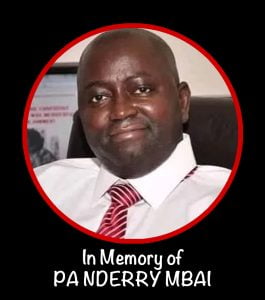
Senegal begins the oil production phase. Pending “the upcoming holding of a session of the Strategic Orientation Committee for Oil and Gas (Cos-Petrogaz) – whose composition will be revised” -, with the objective, in particular, of determining where the revenues will go, Observateur delivered in its edition this Thursday, the key to the distribution of revenues from the first phase of operation already retained.
75% for Cost Oil (oil costs) and 25% for Oil Profile (oil profit)
“With the operator of the Sangomar oil field, Woodside Energy, Senegal signed a Research and Production Sharing Contract (Crpp). In the Sangomar joint venture, Senegal is represented by the Société des Petroles du Sénégal (Petrosen) which is the technical arm of the State with 18% of the shares and 82% for Woodside. In this type of contract. The production is divided into two parts. One part for oil costs (Cost Oil) and another for oil profit (Oil Profile). In the Sangomar co-ownership, the distribution key is 75% for oil costs and 85% for oil profit. At the highest level, the 75% of revenues can be used to recover costs, including operating expenditures, capital expenditures of the execution phase, capital expenditures prior to the final investment decision ( Fid) and the fees paid to the Government of Senegal. The remaining 25% of revenues are shared between the contractor – Woodside (82%) and Petrosen (18%) – and the share of the State of Senegal (parafiscality, taxation of subcontractors, etc.). Taxation consists of Corporate Income Tax (Woodside and Petrosen) which is 33% and a branch income tax of 10% is applied to income after income tax. In addition, there are minor levies and payments.”
“The share of the State of Senegal in oil profits can range from 15 to 40%, depending on production capacity”
“However, Senegal may have better depending on the field production capacity on the 29% of oil profit (Oil Profile). For a production capacity of o to 50,000 barrels, the contractor’s share (Woodside and Petrosen) is 88% and 15% for the State of Senegal. For production of 50,000 to 100,000 barrels, the contractor’s share is 80% and 20% for the State. For a production capacity of 100,000 to 150,000 barrels, the contractor’s share is 75% and 25% for the State of Senegal. If the production capacity is 180,000 to 200,000 barrels, the contractor’s share is 70% and 30% for the State. And if production exceeds 200,000 barrels per day, the contractor’s share is 60% and 40% for the State of Senegal. So, the share of the State of Senegal in the oil profit can range from 15 to 40%, depending on the production capacity of the field.


